
The roots of the Mexican cultural elements at Xoximilco Cancun
November 24, 2023
Cultural representations paying homage to the traditions and heritage of Mexico.
Talking about Mexican culture is stepping into a world like no other; amidst vibrant colors, textures, spicy flavors, and lively rhythms, it's hard not to fall in love with its charms. We look for any excuse to celebrate life because we are simply too fortunate, and Xoximilco Cancun shares our appreciation.
This floating fiesta is a meeting point for those who love to share the excitement of traditions. However, with all the dancing and tequila, you may have missed a cultural reference or two. Today, my mission is to enlighten you about the stories behind some of the iconic elements of this picturesque celebration.
Take note!

1. Traditional Trajineras
The first thing you'll notice upon arriving at Xoximilco Cancun are its charming trajineras at the dock. What makes this experience so special is that it pays homage to the tradition of Xochimilco in Mexico City.
As I write this blog, Xoximilco boasts more than 40 trajineras, each sporting a unique design inspired by the name displayed on top. Here are some of the most distinctive ones:
- VIDA Y MUERTE
Dedicated to one of Mexico's most emblematic celebrations: the Day of the Dead. This trajinera proudly displays the elegant Catrina, surrounded by marigold flowers. The Catrina, a social satire created by Mexican illustrator José Guadalupe Posada during the Porfiriato era, is featured. At the same time, marigold flowers are used to decorate and bring life to altars during these festivities and to guide souls to the feasts prepared in their honor.

- VIVA QUERETARO
Is it okay to play favorites? If so, Querétaro is high on my list! In this trajinera, the spotlight is on the Lelés dolls (or Amealco dolls, named after their Queretaro origin). Crafted by indigenous Otomi and Mazahua women, these rag dolls showcase traditional attire, delicate embroidered faces, and ribbons in their braids. Their impact has been so significant that in 2018, the Lele and other artisan dolls were declared Cultural Heritage of the State of Querétaro.

- CIUDAD DE MEXICO
I think the star of this trajinera needs no introduction, but just in case, she is the Virgin of Guadalupe. According to tradition, around the year 1531, this Virgin appeared to a humble man named Juan Diego on the Tepeyac Hill (also called Guadalupe Hill), located near Mexico City.
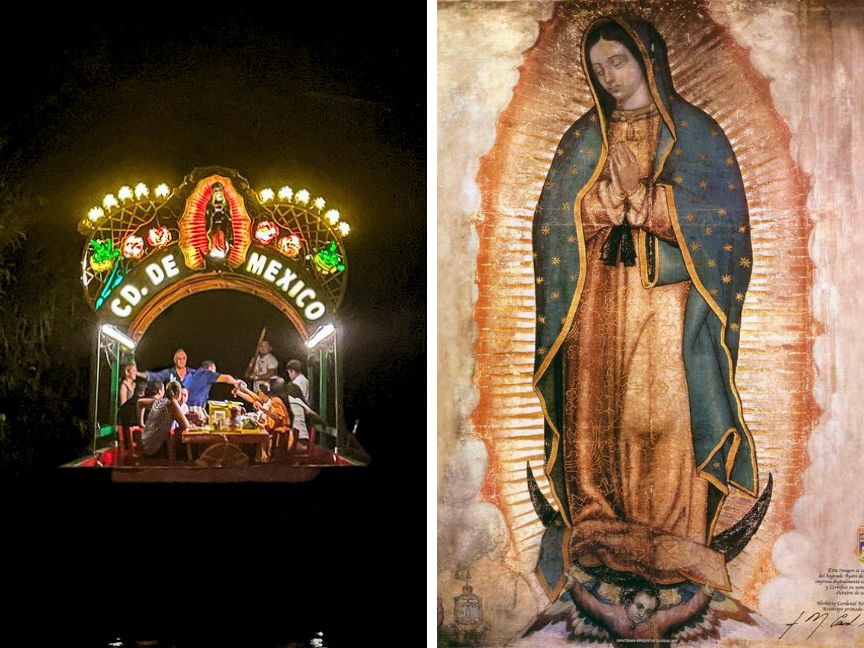
- VIVA PUEBLA
Puebla's talavera pottery is found in dishes, tiles, mosaics, and in Xoximilco Cancun, also on trajineras. Mexican artisans use natural minerals to paint intricate designs on ceramic pieces, and the end result is truly beautiful. In 2020, this pottery technique was declared Intangible Cultural Heritage by UNESCO. Find original pieces in the park's shops.
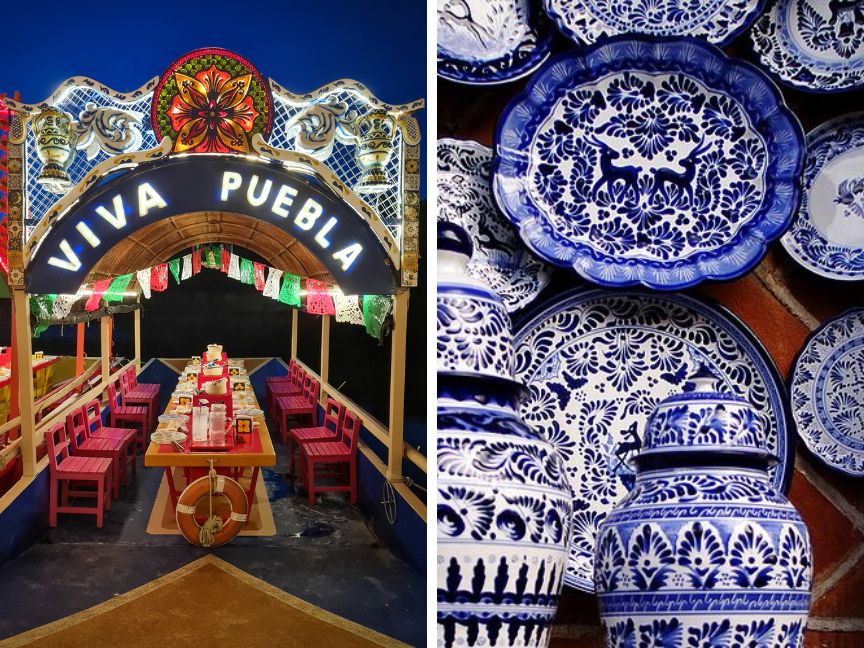
- VIVA OAXACA
This trajinera sparks a lot of curiosity... What does it look like? There's no wrong answer really, because you're looking at an alebrije from Oaxaca. Unique, colorful, and playful, these creatures that combine elements from different animals represent the animal counterpart of those who own them (some even consider them spiritual guides). They are usually carved from wood, and like talavera, you can take one home by visiting the park's shops.
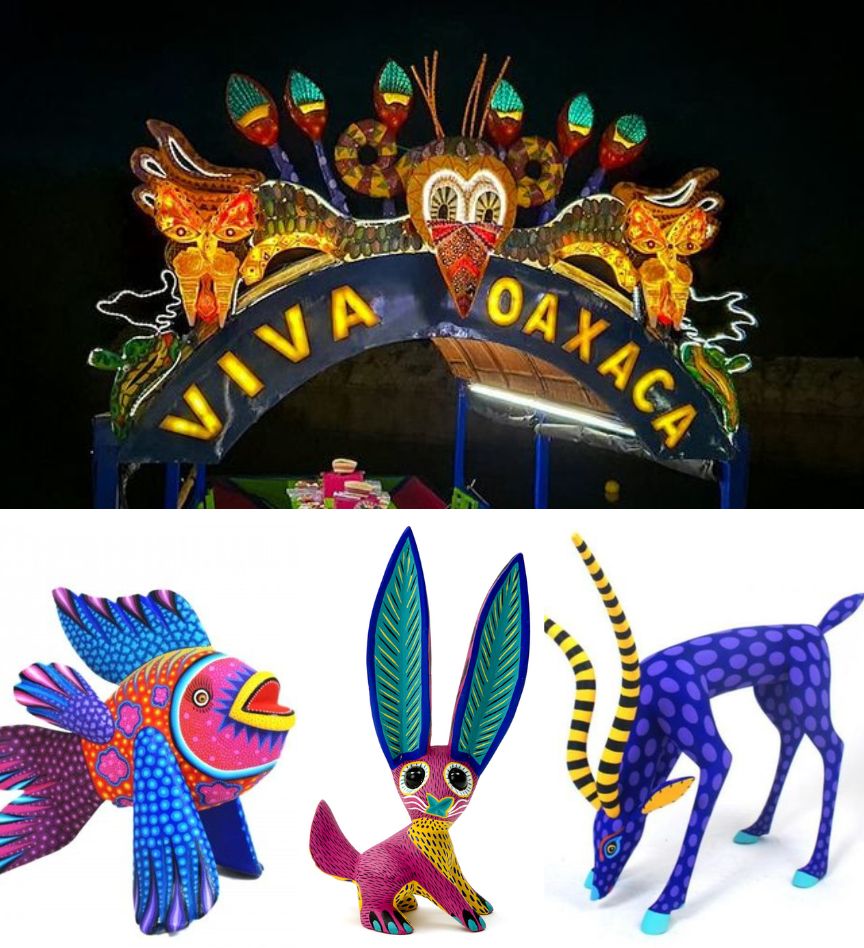
- VIVA COAHUILA
Viva Coahuila sports a splendid illuminated sarape, and we're here for it! This iconic textile is embroidered by proud Northerners with dedication and skill, having its origins in independent Mexico. Pay special attention to the geometric motifs in the center. This colorful garment, typically considered masculine, is often regarded as the counterpart to the feminine "rebozo".
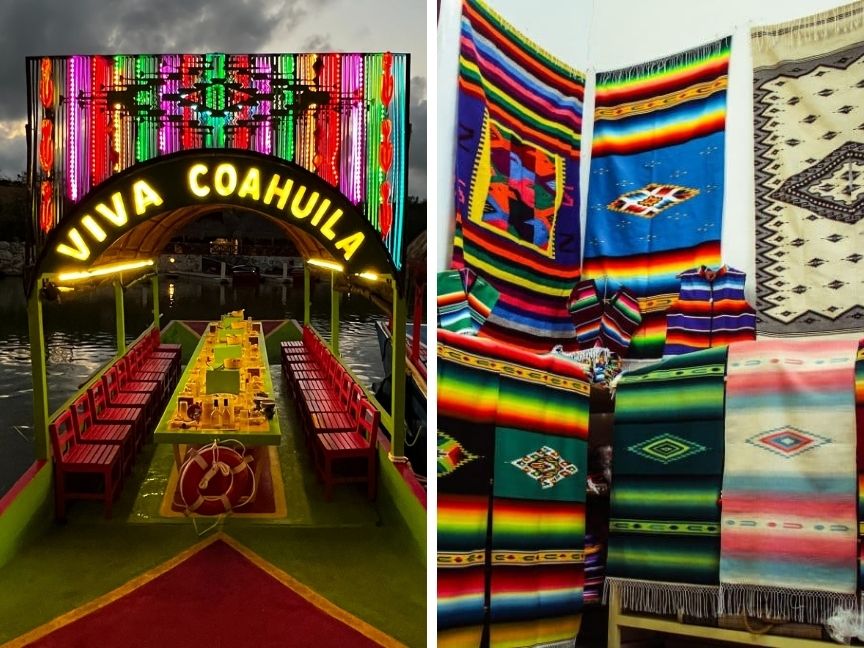
- VIVA LA LOTERIA
One of the most beloved board games in the country! If you grew up in Mexico, I can guarantee that you've played the lottery at least once in your life, whether with your primos or during the Holidays. The lottery has four components: the boards, the cards, the chants, and the little beans (or any small object to mark the cards). The game involves "calling" the cards in a fun way, and the first to form lines or complete the board, wins. Leave us a comment if you'd like us to create a blog with the most original verses of the lottery...

- VIVA MORELOS
One of the most detailed trajinera, as Mexican culture is anything but simple. In Viva Morelos, you can observe the iconic "chinelos" representatives of traditional carnivals and festivals in the state of Morelos and some municipalities in Mexico City. Although the dancers don't have a super-defined style, their dance is called "brinco del chinelo" because they jump around to the beat of wind band music.
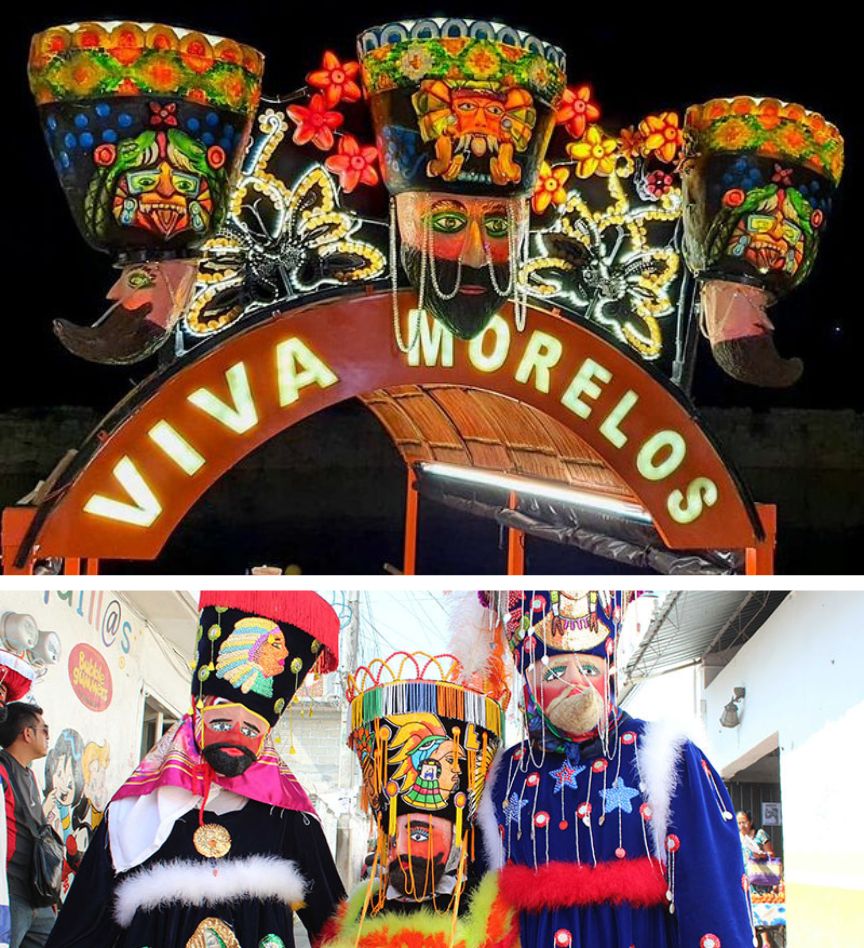
- LA LUXA
This trajinera represents a beloved element of Mexican popular culture: lucha libre (wrestling). You might not be familiar with the sport of these masked wrestlers, but you probably know some legends that achieved worldwide fame in the fifties: the imposing Blue Demon or the always elegant Santo. The Consejo Mundial de Lucha Libre (World Wrestling Council) was created in 1922 by Salvador Lutteroth, a former lieutenant of the Revolution. Still, the first wrestling matches date back to the 19th century. This spectacle quickly gained popularity thanks to acrobatics, theatricality, and of course, the shiny masks.
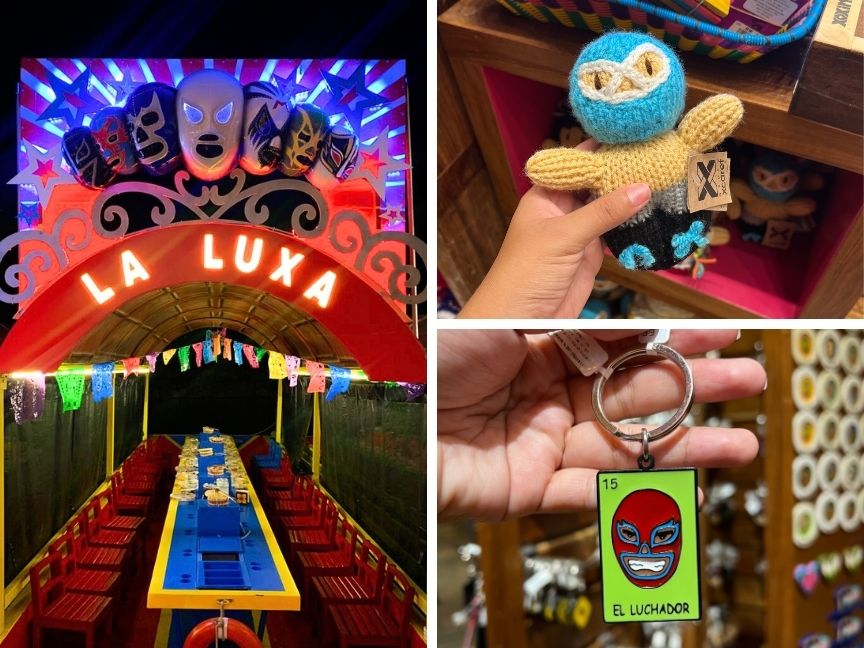
- VIVA HIDALGO
Look at these beautiful embroideries, an undeniable testament to the significance of Mexican textile work as cultural heritage. The Tenango embroidery comes from the municipality of Tenango de Doria in Hidalgo. The intricate designs tell stories, and the colors not only create appealing images but are also rich in symbolism: green represents vegetation, orange is fire, blue is the moon, brown is the earth, red is good, and black is evil.
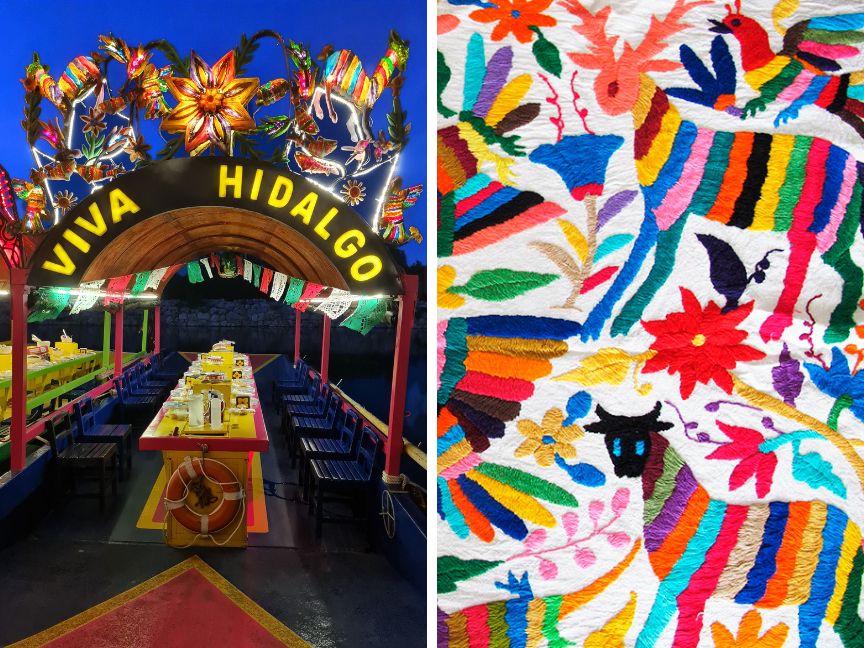
2. Compadres' Attire
Remaining true to the tradition of Mexico City, the rowers and compadres aboard the trajineras wear an ensemble of cotton with a sash, leather sandals, and a satchel. These pay homage to the attire that the inhabitants of ancient Xochimilco proudly wore. In addition to being authentic, the fresh and lightweight fabric is perfect for the challenging task of rowing through the canals of Xoximilco Cancun, allowing them to with the best energy and enjoying the experience.
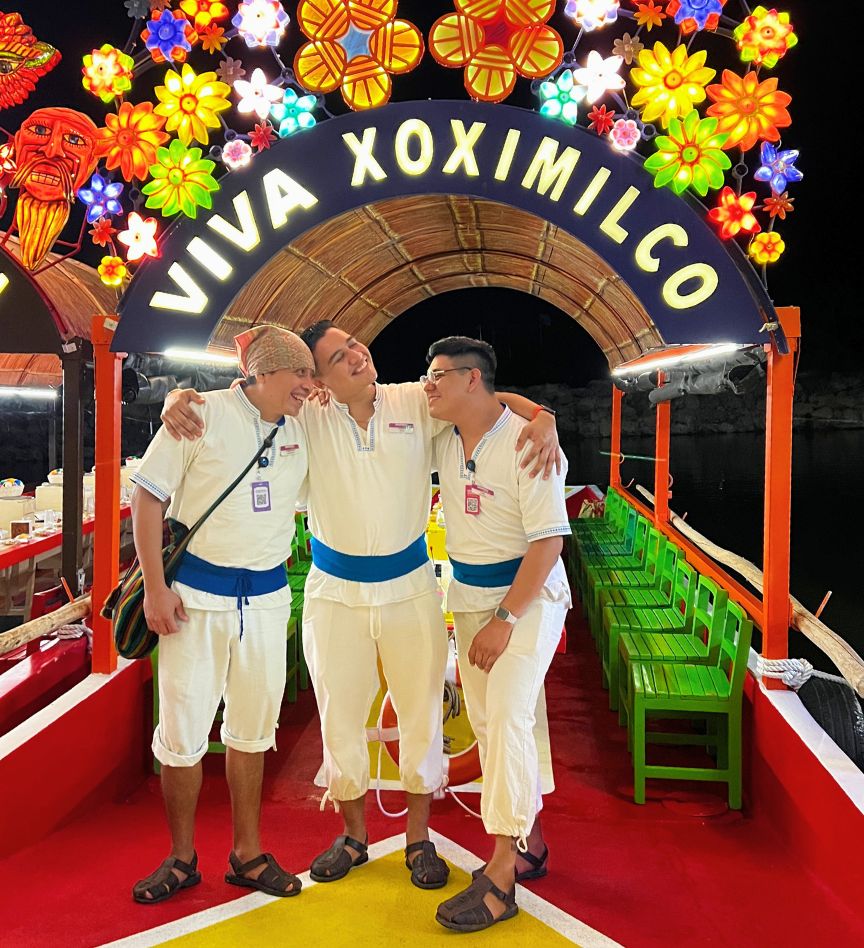
3. Music
- The Marimba
Did you know that the musicians' attire in Xoximilco is also a cultural reference? Let's start with the marimba. It's no coincidence that the attire worn by marimba players is typical of the state of Chiapas, where the echo of the marimba has resonated through its streets since 1545. Here, the double-keyboard marimba was invented, and in Tuxtla Gutiérrez, you can visit the Marimba Park, where people are always dancing around the kiosk to the sound of the wooden keys.

- The Mariachi
From Mexico to the world: the mariachi! This powerful musical genre has been recognized by UNESCO as Intangible Cultural Heritage, and its most popular hits are synonymous with unity and love for the homeland. Initially, musicians wore rural clothing from Jalisco, but as they modernized, they began to don the splendid charro (or horsemen) outfit, 100% representative of our cultural identity.
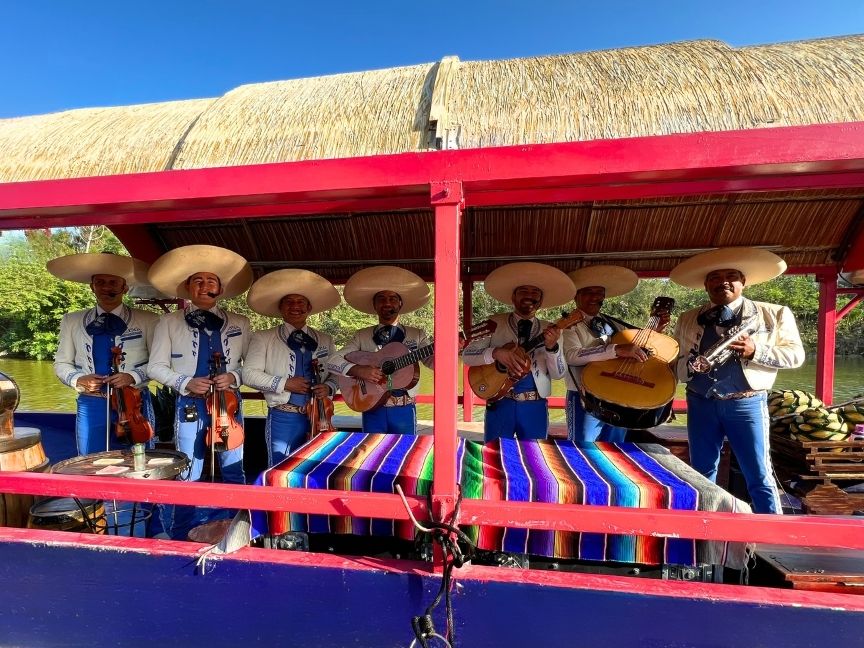
- The Jaraneros
The jaraneros wear the typical attire of Veracruz, honoring the "jarana veracruzana" and the "sones jarochos" (traditional rhythms). Their outfits are entirely white, paying tribute to the tradition of white weddings.
For women, the clothing was inspired by the ladies who arrived with Spanish colonists, but to adapt the dress to the warm climate, heavy fabrics were replaced with lighter ones. In the case of men, it's a combination of indigenous art, mestizos, and tropical essence.
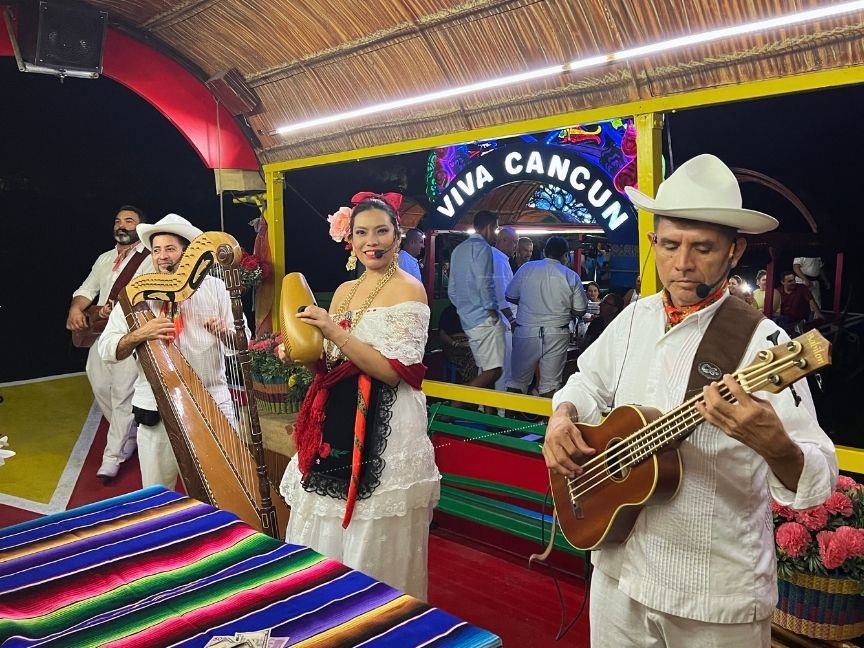
- The Rancheros
The ranchero musical genre originated in the fields of Jalisco in the early 19th century. It is named after the ranches where people engaged in agriculture and livestock would make music.
It gained significant popularity only after the Mexican Revolution (1910). The "Golden Age" of Mexican cinema later propelled this genre onto the world stage.
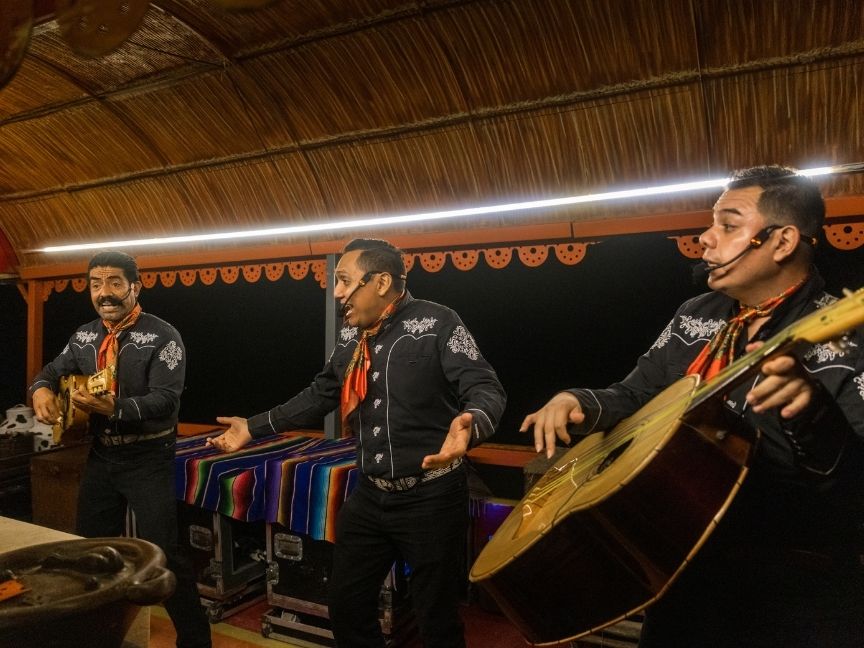
- The Norteños
This musical genre is considered the sound of northern Mexico: Nuevo León, Coahuila, Chihuahua, Sonora, and Sinaloa. It is said that its origins date back to when revolutionary events were sung throughout the republic in the form of corridos.
Thus, it became the counterpart to the European style. The characteristic sound is achieved through the combination of the accordion, bass, tololoche, electric bass, drums, güiro, cowbell, among others.

4. Food
Mexican cuisine is a topic that ignites our souls. We connect flavors, textures, and smells to the people we love and the moments we cherish. It is a heartfelt experience, so here are some dishes and delights that are 100% true to Mexican traditions.
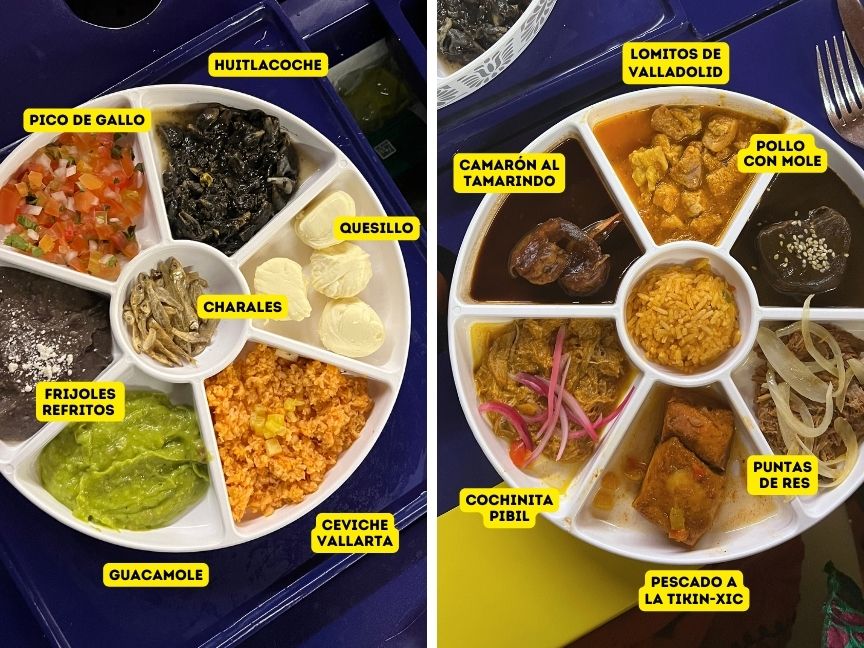
- Chapulines (grasshoppers): An ancestral snack from Oaxaca. These insects were consumed by pre-Hispanic civilizations such as the Mixtecs, Zapotecs, and more.
- Charales (dried fish): A pre-Hispanic culinary heritage from Michoacán. These small freshwater fish are consumed dried and fried, accompanying dozens of dishes.

- Pescado a la Tikin Xic: A delicacy from the state of Yucatán. Its name in Maya means "dry thing" and "wing or fin," referring to the cut of the fish. It's marinated with achiote and bitter orange.
- Pollo con mole (chicken with mole): This dish is traditionally associated with the states of Oaxaca and Puebla, but its pre-Hispanic origin lies with the Aztecs. The most fascinating aspect of mole is its variety of ingredients, from numerous spices to chocolate.
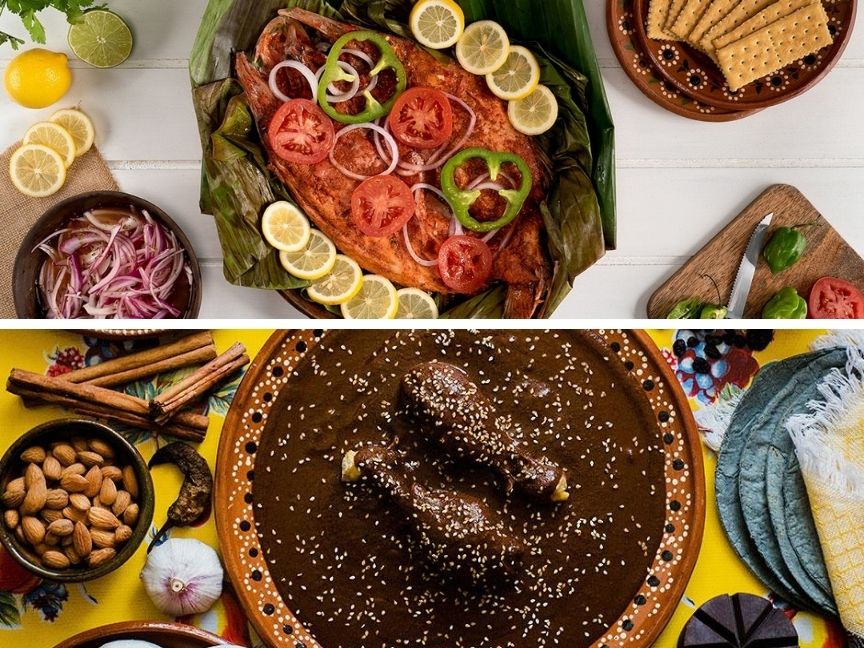
- Huitlacoche: This corn fungus comes from Puebla. The curious thing is that huitlacoche grows in corn crops worldwide, but only in Mexico do we clean and cook it for consumption.
- Quesillo: Also known as Oaxaca cheese, where it originated. This cheese is famous for being easy to shred, soft, and, of course, very, very tasty. Whether in quesadillas or on its own, it's a delicacy.
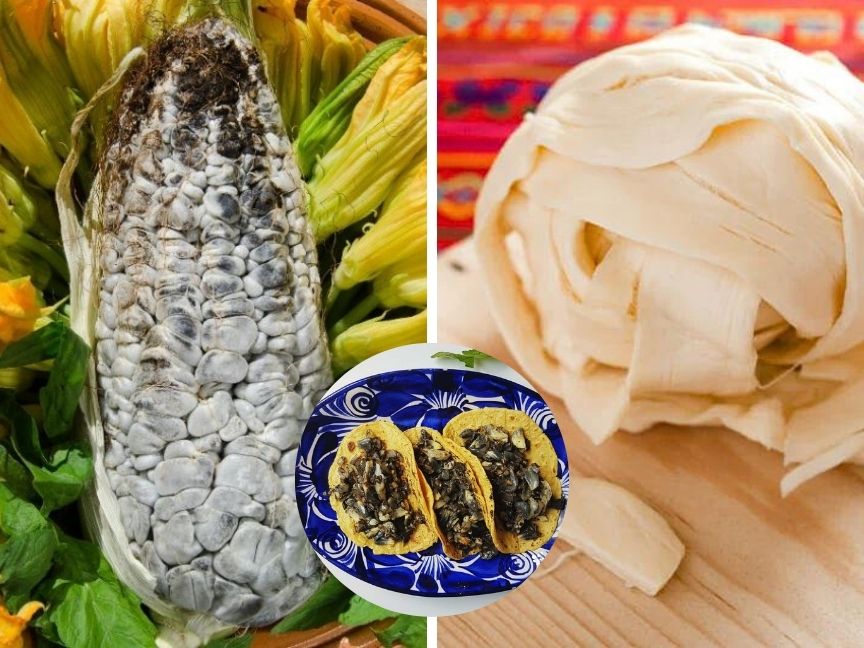
NOW, LET'S MOVE ON TO SOME DESSERTS!
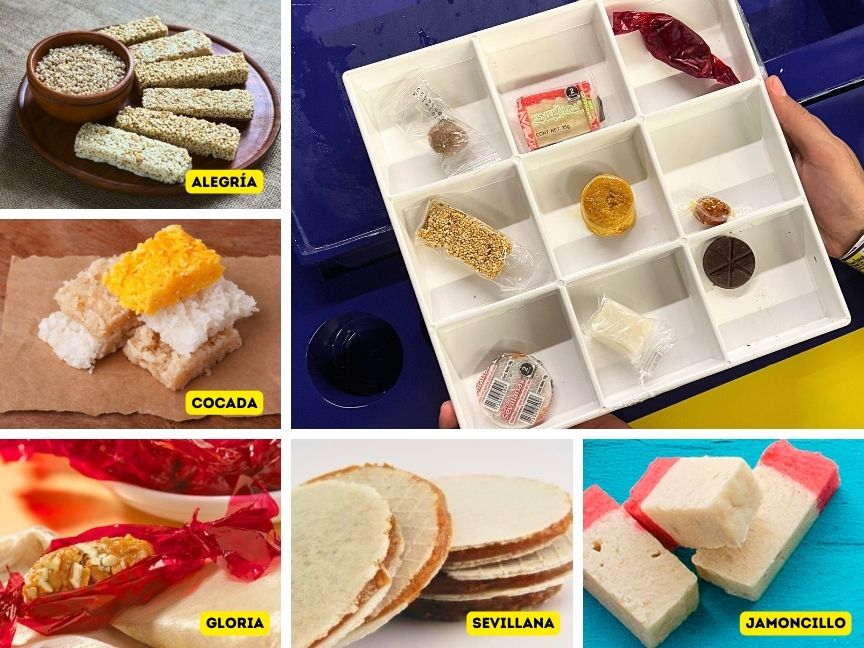
- Gloria: From the state of Nuevo León. Wrapped in its typical red cellophane, it is a combination of milk, pine nuts, piloncillo (unrefined sugar), cinnamon, nuts, among other ingredients.
- Jamoncillo: Originally from the north and center of Mexico, but Guanajuato stands out for its preparation of jamoncillos with cinnamon and walnut. Its chewy texture is due to the slow cooking of milk caramelized with sugar.
- La Alegría: This sweet made with amaranth stands out in the state of Morelos. Amaranth, being a seed, makes it an incredibly nutritious and light dessert.
- Sevillana: The most significant producer is located in the state of San Luis Potosí. It consists of two wafers with a delicious filling of sweetened condensed milk or cajeta (caramel).
- Cocada: Also known as coconut candy, it originates from the state of Puebla. Made with coconut, piloncillo or sugar, and milk.
5. Games.
- El Balero: This wooden toy requires great skill and talent to insert the ball into the stick. Although its modern origin is unknown, traces of similar artifacts have been found from the Maya civilization. In pre-Hispanic times, a skull was inserted instead of a ball.
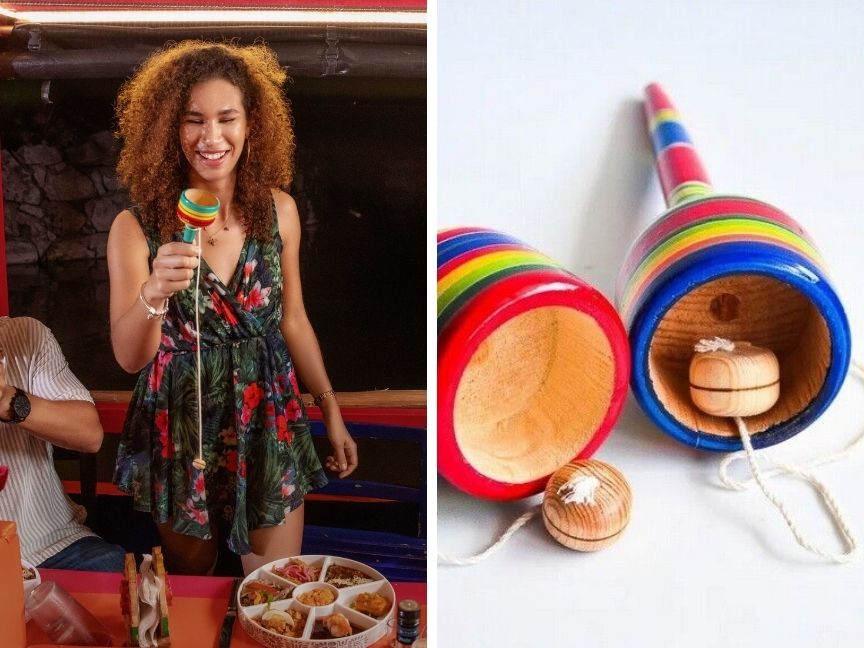
- Los Toques: A curious and fun tradition from Mexico City. Participants touch the metal tips connected to the shock box to feel increasing electric shocks. You'd have to experience it to understand it!
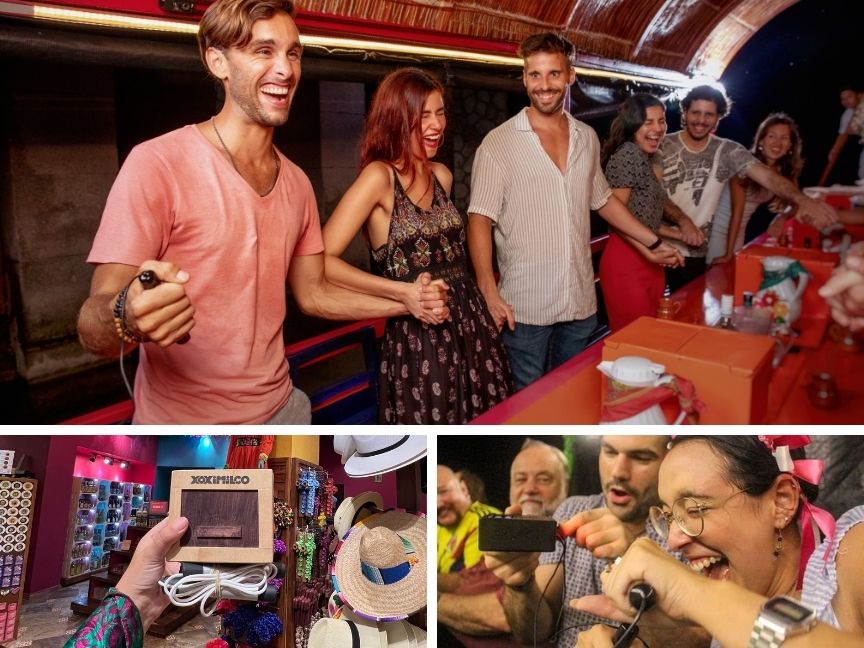
6. Crafts
- Árboles de la Vida (Trees of Life): The great artists of these intricate crafts concentrate in Metepec, State of Mexico. To make them, a clay working technique dating back to the pre-Hispanic era is used. The sculptures tell a story, and recurring themes are religion and creation.
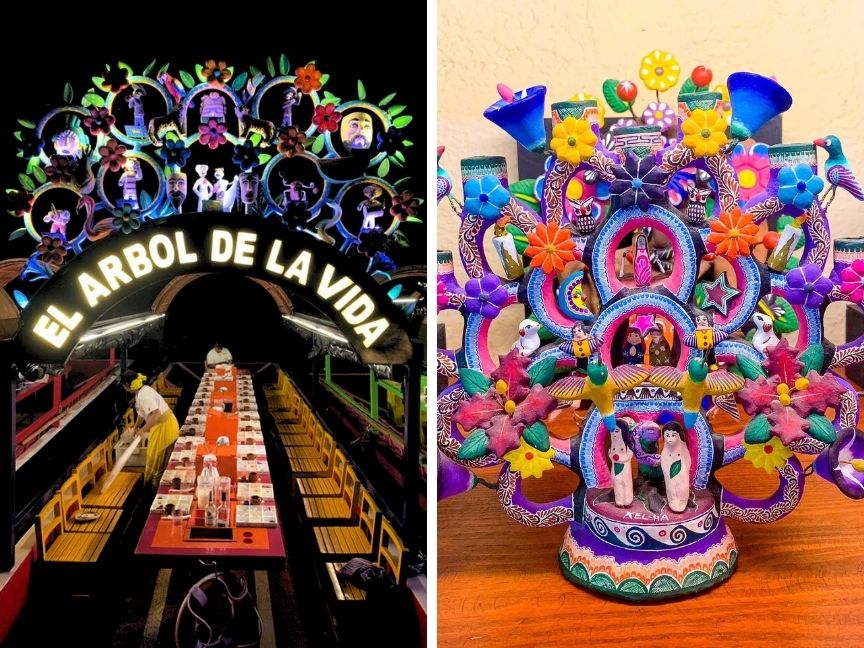
- Embroidered Blouses: Depending on the embroidery, we can identify the origin of each piece. Some of the most famous are Chiapaneco embroideries, characterized by large flowers and diamond patterns, and Yucatecan embroidery, usually presented with a cross-stitch technique.
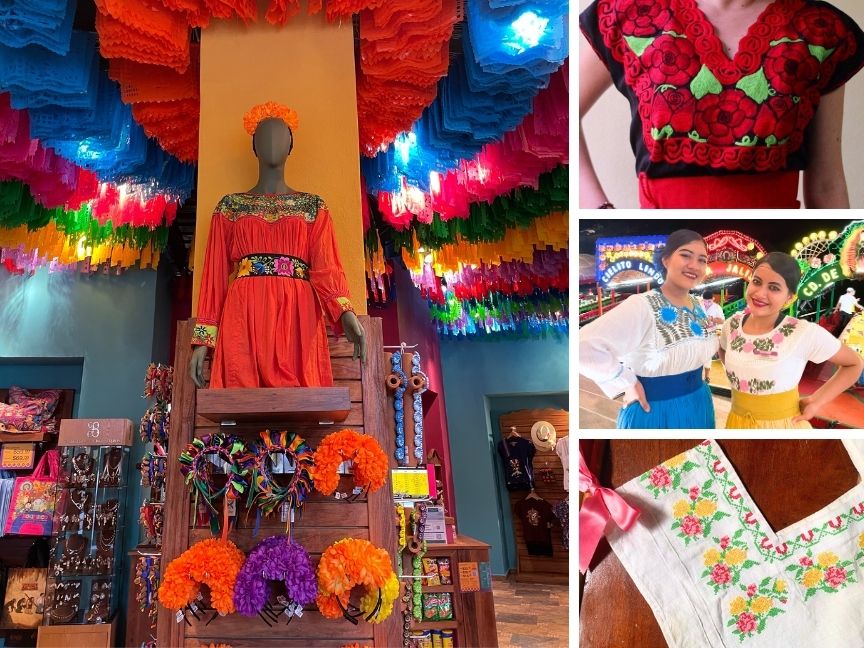
- Barro Negro (Black Clay): These super-resistant items originate from Oaxaca. Traditionally, artisans would slow-cook the clay underground with oak logs, allowing the smoke to tint the clay. Nowadays, many potters use dyes.
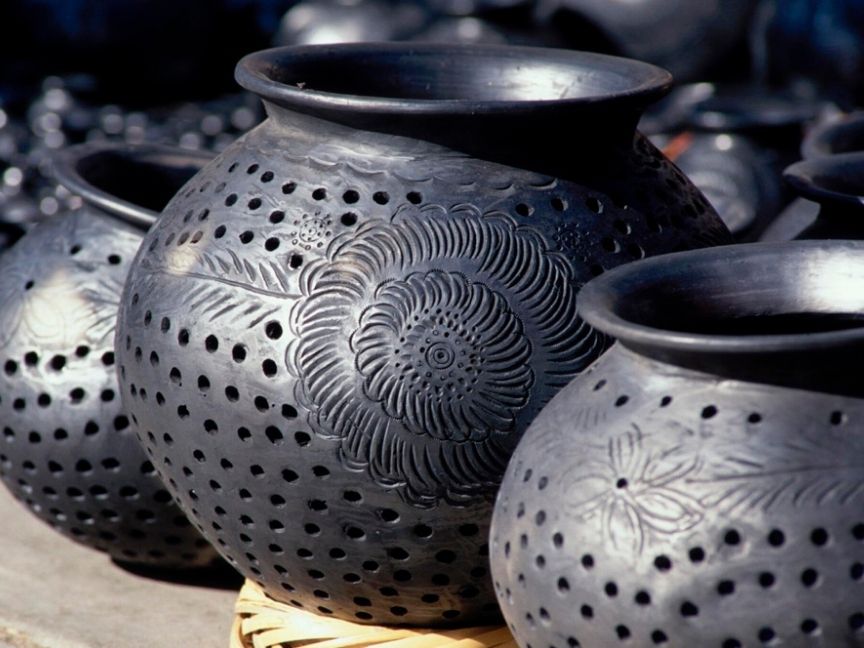
- Alebrijes: These curious wooden creatures originate from Mexico City. Alebrijes are a combination of many creatures, and their inventor, Pedro Linares, is said to have dreamt of them and recreated them with his artisan skills.
- Huichol Art: These colorful crafts are from the Riviera Nayarit. The indigenous people of the mountains depict the worldview of Huichol shamans. Thus, this art is a kind of vibrant and colorful transcription.
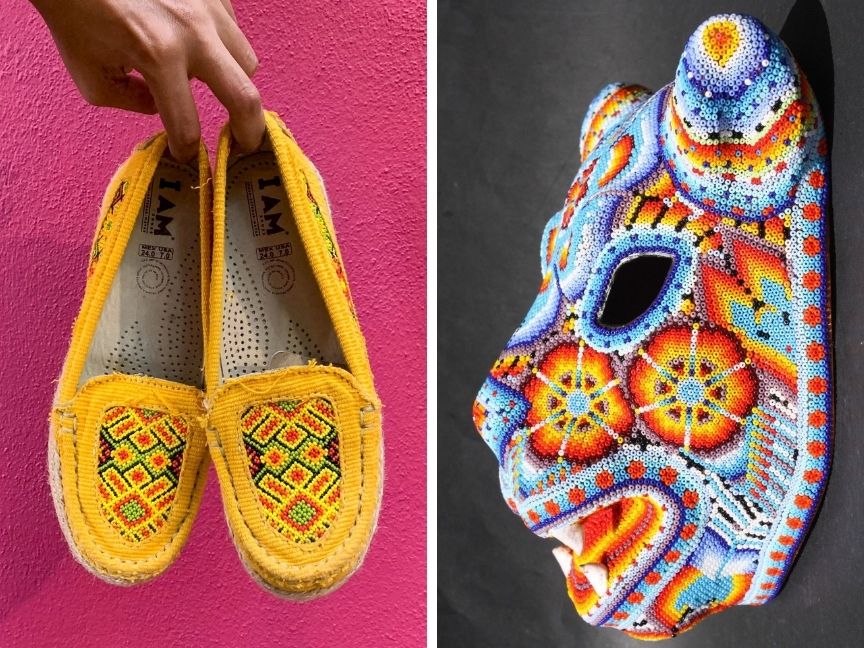
- Silverware: When you think of Mexican silver, you think of Taxco, Guerrero. Taxco is one of Mexico's most famous mining towns, where silversmithing also developed significantly, resulting in beautiful, high-quality pieces.
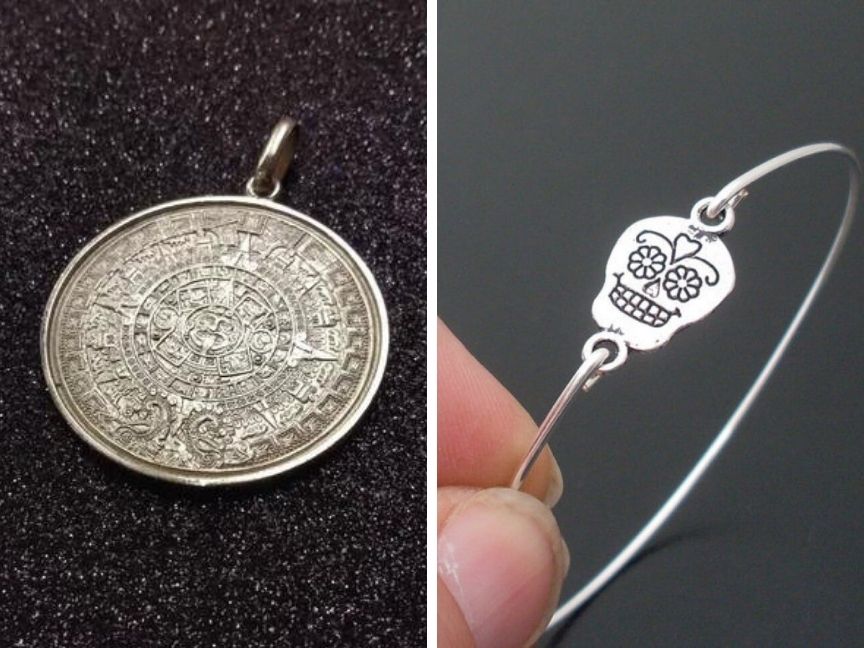
And many, many more!
When you visit Xoximilco Cancun, it feels like you are embarking on an express journey throughout Mexico. You get to appreciate elements that define our cultural identity and give us deep pride, as well as those that have put us on the map. So, the next time you board your trajinera at this floating party, pay attention to the details, as there is a story in every corner.
Tell us: What element stood out the most to you?


Comments
Tips to Train and Prepare to Fully Enjoy the Xplor Bravest Race 2024 Adventure – See You in September!

Meet the creators of the exquisite flavors at the DUAL Lumbre/Centli Restaurant in La Casa de la Playa.

Discover the artisanal process behind the colorful trajineras of Xoximilco, a cultural icon of Mexico. Learn how they are made and the legacy they represent.

The GastroCultural Apapachoa 2024 Festival in Xcaret was a memorable event that fused the culinary and cultural wealth of Mexico. The attendees experienced gastronomic experiences, art and tradition in a unique environment.

Discover the best tips for snorkeling in Cancun and the Riviera Maya. Learn about the top spots, necessary equipment, and recommendations to enjoy the stunning marine life in the Mexican Caribbean.

Learn more about the Xoloitzcuintles. An ancient race that is part of the Cultural Heritage of Mexico.

Grupo Xcaret
Hotels
